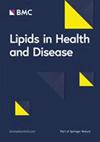他汀类药物治疗肾移植受者的疗效和安全性:系统回顾和荟萃分析
IF 3.9
2区 医学
Q2 BIOCHEMISTRY & MOLECULAR BIOLOGY
引用次数: 0
摘要
血脂异常是心血管疾病的重要风险因素,但肾移植后的最佳治疗方法仍不明确。本荟萃分析旨在阐明他汀类药物在肾移植受者中的疗效和安全性,评估其对心血管事件风险、死亡率和移植物存活率的潜在影响。研究人员对 Medline、Scopus、Web of Science、CENTRAL、Clinicaltrials.gov 和 Google Scholar 从开始到 2024 年 4 月 20 日进行了系统检索。评估肾移植后服用他汀类药物效果的随机对照试验和观察性研究均符合条件。采用最大似然法拟合随机效应模型,并按照 GRADE(推荐、评估、发展和评价分级)方法对证据的确定性进行评估。总共纳入了 27 项研究(10 项随机对照试验和 17 项观察性研究)。使用他汀类药物与不使用他汀类药物相比,发生主要不良心血管事件的风险较低[相对风险 (RR):0.87,95% 置信区间]:相对风险 (RR):0.87,95% 置信区间 (CI):0.67-0.96,中等确定性] 和总死亡率 (RR:0.84,95% 置信区间 (CI):0.74-0.94,低确定性)。比较组之间的移植物丢失风险没有差异(RR:0.72,95% CI:0.48-1.08,确定性很低)。在安全性终点方面,他汀类药物与较低的肝毒性风险相关(RR:0.81,95% CI:0.70-0.93,中等确定性),但与较高的横纹肌溶解风险(RR:1.37,95% CI:1.10-1.70,低确定性)和白内障风险(RR:1.22,95% CI:1.14-1.31,中等确定性)相关。在肌酸激酶升高、移植后糖尿病、髋部骨折、静脉血栓栓塞或癌症的风险方面,使用和未使用他汀类药物的比较组之间未发现有统计学意义的差异。在肾移植受者中,他汀类药物与较低的心血管事件风险和较高的患者存活率相关,并且具有可接受的安全性。还需要进一步开展大规模研究,根据合并症和免疫抑制方案确定他汀类药物的最佳剂量策略和降脂目标。https://doi.org/10.17504/protocols.io.5qpvok3yzl4o/v1 。本文章由计算机程序翻译,如有差异,请以英文原文为准。
Efficacy and safety of statin therapy in kidney transplant recipients: a systematic review and meta-analysis
Dyslipidemia represents an important risk factor for cardiovascular diseases, although its optimal management after kidney transplantation remains unclear. The present meta-analysis aimed to shed light on the efficacy and safety of statins among kidney transplant recipients, evaluating their potential effects on the risk of cardiovascular events, mortality and graft survival. Medline, Scopus, Web of Science, CENTRAL, Clinicaltrials.gov and Google Scholar were systematically searched from their inception through April 20, 2024. Both randomized controlled trials and observational studies evaluating the effects of statin administration after kidney transplantation were held eligible. Random-effects models were fitted using the maximum likelihood method, while the certainty of evidence was appraised following the GRADE (Grading of Recommendations, Assessment, Development, and Evaluations) approach. Overall, 27 studies (10 randomized controlled trials and 17 observational studies) were included. Statin use compared to no use was associated with a lower risk of major adverse cardiovascular events [Relative risk (RR): 0.87, 95% confidence interval (CI): 0.67–0.96, moderate certainty] and overall mortality (RR: 0.84, 95% CI: 0.74–0.94, low certainty). The risk of graft loss did not differ between the compared groups (RR: 0.72, 95% CI: 0.48–1.08, very low certainty). Regarding safety endpoints, statin use was associated with a lower risk of hepatotoxicity (RR: 0.81, 95% CI: 0.70–0.93, moderate certainty), but with a greater risk of rhabdomyolysis (RR: 1.37, 95% CI: 1.10–1.70, low certainty) and cataract (RR: 1.22, 95% CI: 1.14–1.31, moderate certainty). No statistically significant differences between the compared groups with and without statin use were observed concerning the risk of creatine kinase elevation, post-transplant diabetes mellitus, hip fracture, venous thromboembolism, or cancer. Among kidney transplant recipients, statin use is associated with a lower risk of cardiovascular events and better patient survival, presenting an acceptable safety profile. Further large-scale studies are needed to determine the optimal statin dosing strategy and lipid-lowering goals, depending on comorbidities and immunosuppression regimens. https://doi.org/10.17504/protocols.io.5qpvok3yzl4o/v1 .
求助全文
通过发布文献求助,成功后即可免费获取论文全文。
去求助
来源期刊

Lipids in Health and Disease
生物-生化与分子生物学
CiteScore
7.70
自引率
2.20%
发文量
122
审稿时长
3-8 weeks
期刊介绍:
Lipids in Health and Disease is an open access, peer-reviewed, journal that publishes articles on all aspects of lipids: their biochemistry, pharmacology, toxicology, role in health and disease, and the synthesis of new lipid compounds.
Lipids in Health and Disease is aimed at all scientists, health professionals and physicians interested in the area of lipids. Lipids are defined here in their broadest sense, to include: cholesterol, essential fatty acids, saturated fatty acids, phospholipids, inositol lipids, second messenger lipids, enzymes and synthetic machinery that is involved in the metabolism of various lipids in the cells and tissues, and also various aspects of lipid transport, etc. In addition, the journal also publishes research that investigates and defines the role of lipids in various physiological processes, pathology and disease. In particular, the journal aims to bridge the gap between the bench and the clinic by publishing articles that are particularly relevant to human diseases and the role of lipids in the management of various diseases.
 求助内容:
求助内容: 应助结果提醒方式:
应助结果提醒方式:


